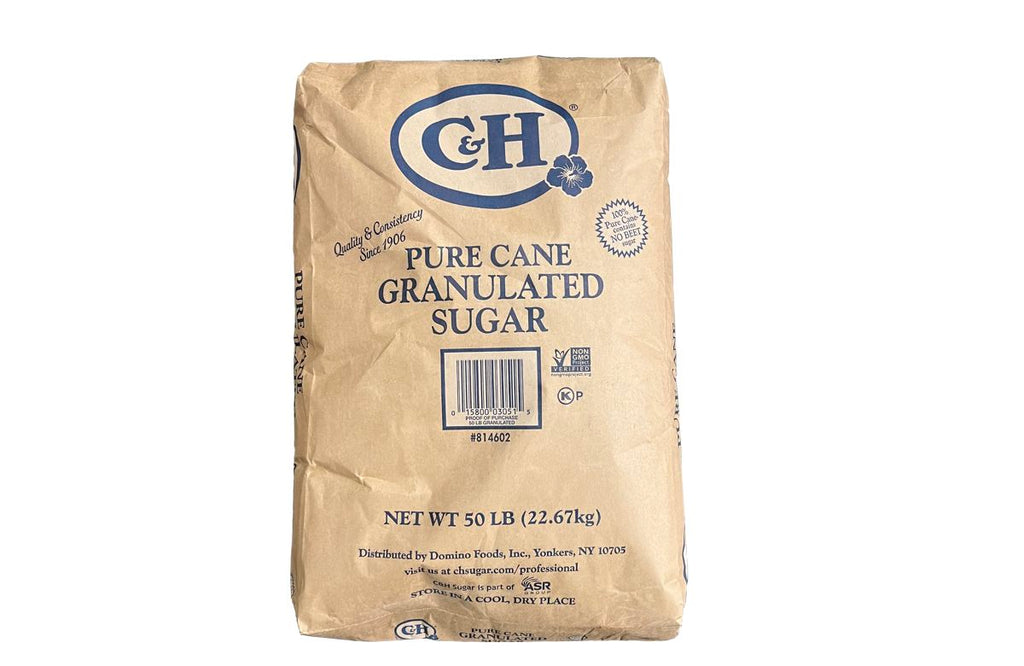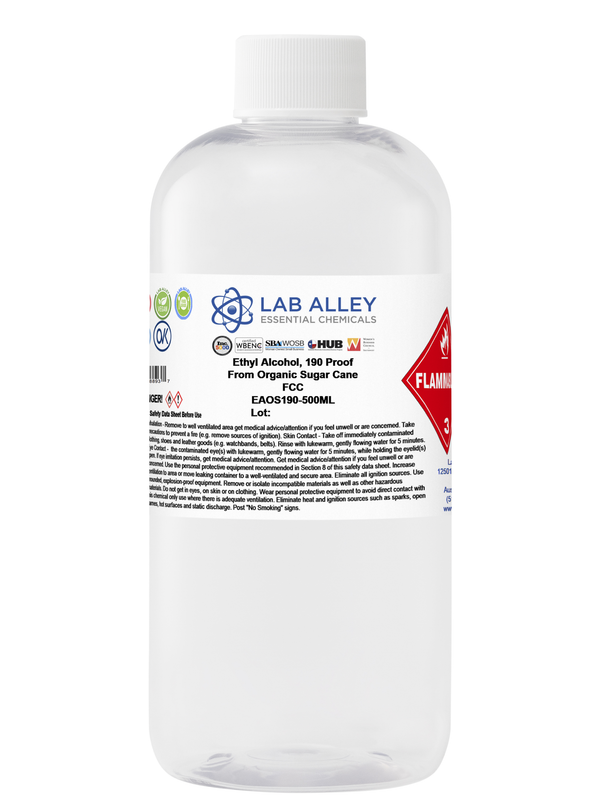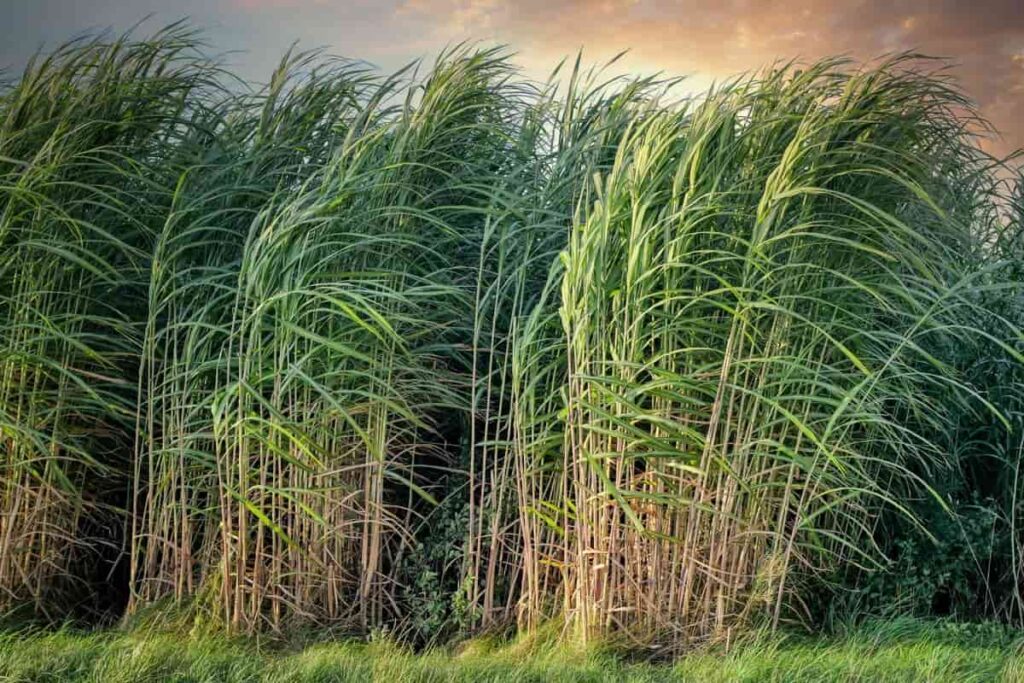Discovering the Versatile Utilizes of Sugar Cane Beyond Sugar
Sugar Cane is usually linked only with sugar, yet its applications expand much beyond. This flexible crop plays a pivotal role in various industries, including biofuels and bioplastics. Additionally, its fibers contribute to lasting building and construction and fabrics. The financial effects of sugar Cane manufacturing additionally emphasize its relevance. As innovations remain to arise, the possibility of sugar Cane to drive financial and ecological developments ends up being increasingly apparent. What other surprises does this resistant plant hold?
The Duty of Sugar Cane in Biofuels
As countries seek lasting energy resources, sugar Cane has become an essential player in the biofuels sector. This exotic plant is rich in sucrose, which can be fermented to produce ethanol, an eco-friendly gas choice to fossil gas. The growing of sugar Cane for biofuel production not just lowers greenhouse gas exhausts however also adds to energy safety, particularly in sugar-producing countries.
In addition, sugar cane-derived ethanol can be mixed with gasoline, boosting its octane score and decreasing reliance on non-renewable resources. The by-products of sugar Cane handling, such as bagasse, are important for generating power, making the entire production cycle energy-efficient.
Research study continues to check out sophisticated approaches for maximizing power yield from sugar walking stick, solidifying its function in the change to cleaner power remedies. As global demand for lasting gas increases, sugar Cane sticks out as an integral component of the biofuel market.
Sugar Cane as a Resource of Bioplastics
Although the ecological impacts of plastic contamination are significantly concerning, sugar Cane provides an encouraging choice as a source of bioplastics. Obtained from renewable energies, bioplastics made from sugar Cane can substantially decrease reliance on petroleum-based plastics. These bioplastics are created with the fermentation of sugars removed from the walking cane, resulting in materials that can be compostable or eco-friendly, depending on their formulation.
Using sugar Cane bioplastics not only lessens carbon exhausts however additionally promotes sustainable farming methods. By making use of farming waste and results, the overall environmental footprint of production is reduced. Additionally, products made from sugar Cane bioplastics can seamlessly integrate right into existing waste monitoring systems, attending to worries regarding waste accumulation.
As industries look for sustainable solutions, sugar cane-based bioplastics stand for a sensible alternative that lines up with global initiatives to battle plastic air pollution and foster a round economic situation.
Medicinal Applications of Sugar Walking Cane
Sugar Cane is identified for its antioxidant properties, which add to numerous health and wellness advantages. Furthermore, it has actually been utilized in standard remedies across societies, highlighting its importance in alternative medicine. These qualities underscore the capacity of sugar Cane in the area of medical applications.
Antioxidant Features of Cane
Many studies have exposed that sugar Cane has significant antioxidant buildings, making it an important part in medicinal applications. The phenolic compounds located in sugar cane, such as flavonoids and phenolic acids, add to its capacity to reduce the effects of cost-free radicals, consequently reducing oxidative stress in the body. This antioxidant task is connected to numerous health benefits, including enhanced cardio health and wellness and boosted immune feature. Additionally, sugar Cane extracts have actually been revealed to show anti-inflammatory results, which can better sustain overall health. By combating oxidative damages, sugar Cane might play a role in the prevention of chronic diseases, making it an appealing topic of research study for its possible healing usages in modern-day medication.
Standard Solutions and Makes Use Of
While modern-day medication frequently counts on synthetic compounds, standard solutions making use of sugar Cane emphasize its historical relevance in numerous societies. In many tropical regions, sugar Cane juice has actually been made use of as an all-natural remedy for ailments such as dehydration and digestion problems. Its high water material and vital nutrients make it a favored therapy for urinary system tract infections and kidney stones. In addition, sugar Cane is thought to possess anti-inflammatory residential properties, helping in the relief of aching throats and respiratory system conditions. Herbal remedies typically incorporates sugar Cane in mixtures to increase energy and boost general well-being. These age-old methods underscore the versatility of sugar walking cane, prolonging its value past sweet taste to encompass wellness and wellness applications.
Eco-Friendly Construction Products From Sugar Cane
Sugar walking cane, typically recognized for its wonderful return, is gaining focus as a source of green building products. These materials use sustainable structure remedies, featuring eco-friendly composites that lower environmental influence. Additionally, sugar cane-derived items provide effective insulation residential properties, enhancing energy performance in structures.
Lasting Structure Solutions
As the global demand for sustainable building and construction products increases, cutting-edge options originated from sugar Cane have actually become a viable option. This sustainable source offers various applications in environment-friendly structure solutions, particularly with its spin-offs. Sugar Cane fibers, recognized for their toughness and resilience, can be made use of in developing insulation products and composite panels. In addition, the juice and molasses from sugar Cane can be refined right into bio-based adhesives, reducing reliance on petroleum-based items. Making use of sugar Cane not just decreases waste yet additionally adds to decrease carbon emissions during production. Moreover, incorporating these materials right into building and construction practices sustains the circular economy, promoting sustainability while attending to the pushing ecological difficulties dealt with by the building market.
Eco-friendly Compound Materials
Eco-friendly composite products have amassed focus as sustainable alternatives in building and construction, particularly those stemmed from sugar walking stick. These materials utilize the coarse by-products of sugar cane, such as bagasse, to create compounds that are both lightweight and solid. By integrating these all-natural fibers, makers can create products that minimize dependence on traditional plastics and non-renewable sources. The lasting nature of sugar Cane composites not just minimizes ecological influence yet likewise supports agricultural economic climates by supplying extra revenue streams for farmers. Furthermore, the biodegradability of these composites assurances that they do not contribute to long-lasting waste in land fills. As the building industry seeks greener solutions, sugar cane-derived compounds offer an appealing course toward a lot more environmentally friendly structure techniques.

Insulation Properties and Advantages
The insulation residential properties of eco-friendly construction materials originated from sugar Cane offer significant advantages in energy efficiency and climate control. Sugar Cane fibers possess natural protecting high qualities that assist control interior temperature levels, minimizing the requirement for extreme home heating or air conditioning. This particular adds to reduce power intake, promoting sustainability in structure techniques. On top of that, the usage of sugar cane-based insulation products is helpful for interior air high quality, as they are less likely to emit volatile natural substances (VOCs) compared to traditional insulation items. In addition, these products are naturally degradable, aligning with eco-conscious construction objectives. As the building sector looks for greener options, sugar cane-derived insulation stands out as a promising remedy that integrates functionality with ecological responsibility, sustaining both energy savings and environmental preservation.
Sugar Cane in the Fabric Industry
Often overlooked, sugar Cane plays a substantial duty in the textile industry, largely with the manufacturing of sustainable fibers. These fibers, acquired from the plant's byproducts, are significantly acknowledged for their environmentally friendly homes. Sugar Cane fibers, such as bagasse and sisal, are durable and naturally degradable, making them appealing choices to traditional artificial fibers.
Their usage in textiles promotes sustainability by minimizing reliance on petroleum-based materials while likewise supplying a method for waste reduction from sugar production. Additionally, developments in fabric processing have actually enabled suppliers to blend sugar Cane fibers with other materials, boosting the overall top quality and adaptability of materials.
This change towards incorporating sugar Cane in textiles mirrors a wider fad in the market, going for eco responsible methods. As demand for lasting materials proceeds to rise, sugar cane's function in textiles might increase, supplying both economic and ecological benefits.
Nutritional Benefits and Animal Feed

In addition, sugar Cane contains vital minerals and vitamins that boost the nutritional account of animal feed, improving immunity and total wellness. Its pleasant taste and palatability make it an enticing feed option, urging feed intake amongst pets. By integrating sugar Cane right into their diet plans, animals producers can lower reliance on standard feed sources, potentially decreasing feed costs while preserving pet health and performance. Sugar Cane emerges as a nourishing and sustainable option in the area of animal agriculture.
Area The Economic Impact of Sugar Cane Manufacturing
While many agricultural products add to neighborhood economic climates, sugar Cane manufacturing stands apart because of its substantial financial impact across different regions. This functional plant not just provides job opportunity in farming, processing, and circulation however likewise sustains secondary industries such as transportation and manufacturing. In countries like Brazil and India, sugar Cane is an essential motorist of country growth, fostering economic stability and boosting livelihoods.
The by-products of sugar cane, consisting of ethanol and molasses, better diversify income streams, reducing and creating added markets dependency on traditional sweeteners - What Is Sugar Cane Used For. As global need for sustainable energy rises, the duty of sugar Cane in biofuel production is becoming significantly famous, drawing in investments and enhancing regional economic climates. Overall, the financial implications of sugar Cane manufacturing are profound, affecting both regional job markets and more comprehensive economic fads in regions reliant on this vital crop
Regularly Asked Questions
Just How Is Sugar Cane Processed Into Biofuels?
The processing of sugar Cane right into biofuels includes removing juice, fermenting it into ethanol, and improving the product. This approach utilizes the plant's all-natural sugars, transforming them right into renewable resource sources for numerous applications.
What Are the Environmental Benefits of Making Use Of Sugar Walking Stick?
The ecological benefits of utilizing sugar Cane consist of minimized greenhouse gas exhausts, enhanced dirt health via sustainable farming techniques, and lower dependence on fossil fuels, which jointly add to a much more lasting and environment-friendly farming system.

Can Sugar Cane Be Grown in Any Climate?

Sugar Cane flourishes in tropical and subtropical climates, requiring warm temperature levels, enough sunlight, and enough rains. Its development is restricted in colder areas, making it improper for arctic or temperate climates where frost occurs.
What Are the Historic Usages of Sugar Walking Cane?
Historically, sugar Cane offered different purposes beyond sweetening - What Is Sugar Cane Used For. It was used for producing rum, as a resource of biofuel, in typical medication, and for crafting products like paper and molasses, showcasing its diverse applications throughout different cultures
Just How Does Sugar Cane Influence Resident Economies?
The impact of sugar Cane on neighborhood economies is substantial, supplying employment, boosting agricultural fields, and promoting trade. Its cultivation sustains here are the findings rural livelihoods and boosts regional markets, contributing to total financial growth and area advancement.
The economic implications of sugar Cane production additionally highlight its importance. Acquired from sustainable sources, bioplastics made from sugar Cane can considerably decrease dependence on petroleum-based plastics. Naturally degradable composite products have amassed interest as lasting choices in building, specifically those obtained from sugar walking stick. These products use the fibrous results of sugar walking stick, you could try these out such as bagasse, to produce compounds that are both lightweight and strong. While several agricultural assets contribute to regional economies, sugar Cane production stands out due to its substantial economic effect throughout different areas.